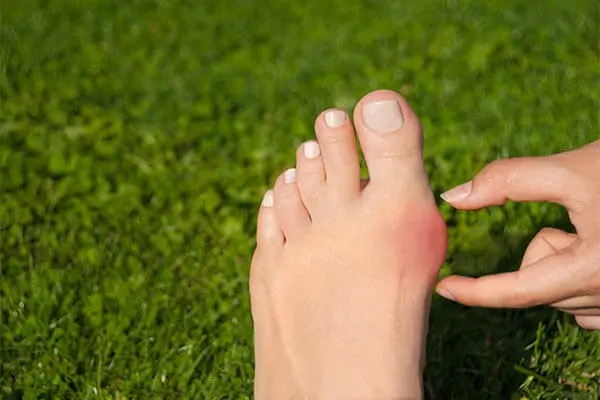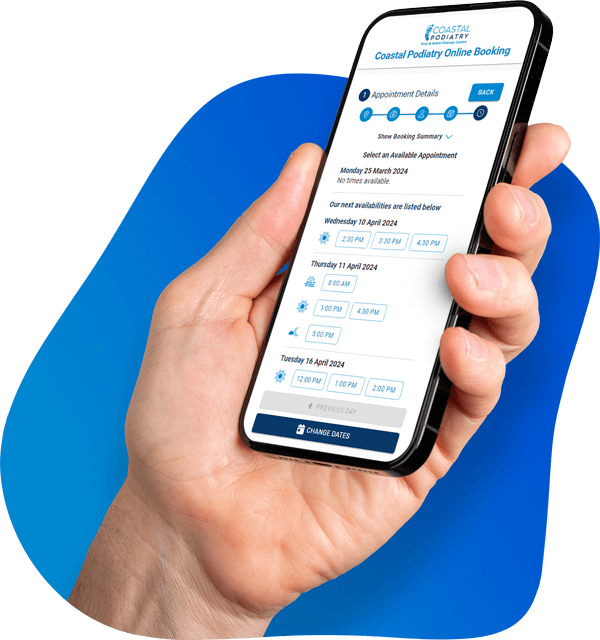Bunions are a common foot complaint and affect millions of people worldwide. That painful bump at the base of your big toe affects one in three adults, causing discomfort and sometimes even difficulty when walking or wearing shoes.
However, surgery is often considered a last resort when it comes to treatment. As a result, many people look for non-surgical ways to relieve the pain or slow the progression of the condition. One of the most common options is bunion correctors which are designed to realign the toe and ease discomfort.
But do bunion correctors actually work? In this post, we cover everything you need to know about bunion correctors, from what they are, how they work and the results you can expect to alternatives to consider.
What Are Bunions?
Also known as hallux valgus, bunions are a foot condition that typically develops gradually over time. Bunions appear as a bony bump that forms at the base of your big toe joint. This bump forms when the bones in the front part of your foot shift out of their natural alignment, causing your big toe to lean toward your smaller toes. As the condition progresses, your foot’s structure changes, affecting both the bones and ligaments.
What Makes Bunions Painful?
Due to the pressure and friction they create around the big toe joint, bunions can be painful. As the bump at the base of the toe forms, it can lead to swelling, redness, and soreness around the joint, making it sensitive to touch. The constant rubbing of the first and second toes can also result in corns or calluses. In more severe cases, the misalignment caused by a bunion can make it challenging to wear certain shoes and make walking or standing uncomfortable.
What Causes Bunions?
The exact cause of bunions is not fully understood, but it is thought that they develop through a combination of factors rather than a single cause. While anyone can develop a bunion, certain factors can increase the likelihood of their formation.
One of the most common contributors is prolonged pressure on the toes. This can be from standing or working on your feet for long periods or wearing ill-fitting shoes like high heels or narrow footwear that force the toes into an unnatural position. Consequently, shoes are thought to be the reason why women are more likely to develop bunions than men. Over time, this pressure can push the bones in the front of the foot out of alignment, leading to the development of a bunion.
While footwear and pressure play a significant role in bunion formation, some research suggests that bunions are hereditary. Studies show that many people with bunions have family members who also have the condition. Additionally, some people are born with congenital foot deformities may also increase the likelihood of developing bunions over time.
Lastly, foot injuries and excessive stress on the feet may also contribute to bunion formation. Trauma to the foot can weaken the joint at the base of the big toe, making it more susceptible to shifting out of place.
What Are Bunion Correctors?
Put simply, bunion correctors are non-invasive orthopaedic devices designed to realign your big toe and provide relief from bunion-related discomfort. These devices are designed to apply gentle pressure to guide your toe back to its natural position.
However, it is important to note that these do not remove or permanently “correct” the bunion, but rather are used to relieve pain and discomfort caused by the bunion and the misaligned joint.
There are a range of different bunion correctors available, each designed to target specific needs and preferences. Some correctors work best during the day, while others are better for nighttime use – how long you use a corrector usually depends on your needs and comfort levels.
The most common bunion correctors include:
- Toe Spacers: Made from gel or silicone, these devices fit between your big toe and second toe to gently push the big toe into a more natural position
- Bunion Splints: These devices wrap around your foot and toe to create separation and keep natural toe alignment. This is most often used at night when you are sleeping.
- Arch Supports: These correctors give structural support to keep proper bone alignment and work great for people with flat feet.
- Bunion Pads: Typically made from gel or soft material, these pads protect the bunion and skin from friction and pressure.
- Bunion Socks: These come with built-in gel pads to cushion the affected area. This is ideal for daily use.
How Do Bunion Correctors Work?
While different bunion correctors may vary in design and function, they are all designed to relieve discomfort and reduce the pressure on your bunion. These devices apply gentle, steady pressure to realign the big toe joint, helping to guide the toe back toward a more natural position.
Some bunion correctors work by creating a protective space around the bunion area, which helps shield it from painful contact with shoes or socks. It also reduces friction to prevent further irritation and swelling.
Although bunion correctors can be effective in providing relief, they do not actually “cure” bunions or permanently realign the toe. They offer temporary relief from discomfort, making activities like walking, running, or standing more comfortable. However, for long-term improvement or to address the underlying bone misalignment, other treatment options, such as surgery, may be required.
Factors That Influence the Effectiveness Of Bunion Correctors
The success rate of bunion correctors varies widely across users and may depend on:
- Your bunion’s severity
- The type of corrector you choose
- How often you wear it
- Your foot’s structure
Non-Surgical Alternatives to Bunion Correctors
While bunion correctors can offer relief, there are many reasons why people prefer not to wear them. Fortunately, there are several non-surgical alternatives that can help manage the pain and discomfort associated with bunions.
Tip: For the best results, a combination of the following methods can provide effective relief
- Proper Footwear: The right footwear can make all the difference in preventing bunion pain from worsening. Opt for shoes with a wide toe box and low heels to reduce pressure and friction on the toes. Shoes made from soft, flexible materials that adapt to your foot’s shape can provide comfort, while strong arch support helps spread your weight evenly and reduces stress on the bunion area.
- Physiotherapy: Physiotherapy and exercise can strengthen the foot muscles and improve joint movement, which can relieve bunion pain. Regular stretching routines that target specific muscle groups, focusing on toe flexibility and foot strength, are especially effective in alleviating discomfort.
- Orthotic Inserts: Orthotic inserts (or removable insoles) can provide targeted support for the natural structure of your foot. These help spread pressure across your foot, reducing the stress on the affected joint. Orthotics can be worn in everyday shoes to provide ongoing support and comfort.
- Taping and Padding: Taping and padding can be used to protect the bunion from friction and irritation. Specially designed pads can shield the bulging joint from painful contact while taping can help support the toe and joint.
When to Consider Surgery
The only permanent option to correct bunions and relieve discomfort is surgery. However, it is often considered a last resort, and non-surgical options are recommended first. Surgery typically becomes a consideration when treatments like bunion correctors no longer provide enough relief:
- Foot pain interferes with daily activities, making it difficult to walk, stand, or enjoy normal routines.
- Swelling around the big toe, even after rest or medication, and doesn’t improve with time.
- The toes cross over each other, causing further discomfort or affecting your foot’s overall function.
- A big toe that won’t bend or straighten, limiting mobility and comfort.
- The development of other foot problems, such as hammertoes or bursitis, that are caused or worsened by the bunion.
While it is reported that there are at least 100 different types of surgeries that are considered when treating bunions, it is important to remember that bunion surgery is not a cosmetic procedure. Rather, it is a surgery to address pain and mobility issues, with the goal of improving foot function. the type of surgery required will depend on the severity of your bunion:
- Mild bunions: Surgery may involve removing the enlarged portion of the bone and realigning the muscles, tendons, and ligaments around the joint.
- Moderate bunions: Your surgeon may cut the bone and reposition it, while also adjusting tendons and ligaments in the area.
- Severe bunions: This may require removing the enlarged bone, cutting and realigning the remaining bone, and repositioning tendons and ligaments for a more natural alignment.
- Arthritic bunions: In cases where the joint is severely damaged, the joint may need to be fused to eliminate pain and stop movement in the area.
Recovery time will vary depending on the type of surgery. While minimally invasive procedures may allow you to walk soon after, basic recovery typically takes 6 to 8 weeks. During this time, you may be advised to limit walking and weight-bearing activities, and you may need to use an assistive device like crutches or a knee walker to help with mobility.
Key Takeaways
Living with bunions can be challenging, but you don’t have to suffer through the discomfort. As bunions develop gradually over time, this offers an opportunity to try different non-surgical treatments. For more severe cases where regular treatments don’t offer enough relief, surgery may be the next best step.
Whether you’re considering non-surgical options or looking for a permanent solution, with the right care, you can find relief and get back to doing the activities you love.
If you’re experiencing pain or discomfort from bunions, our team at Coastal Podiatry is here to help. With over 19 years of experience serving clients on the Sunshine Coast, we offer the latest in podiatric technology and provide compassionate care tailored to your needs. Book your consultation today and take the first step towards better foot health.




